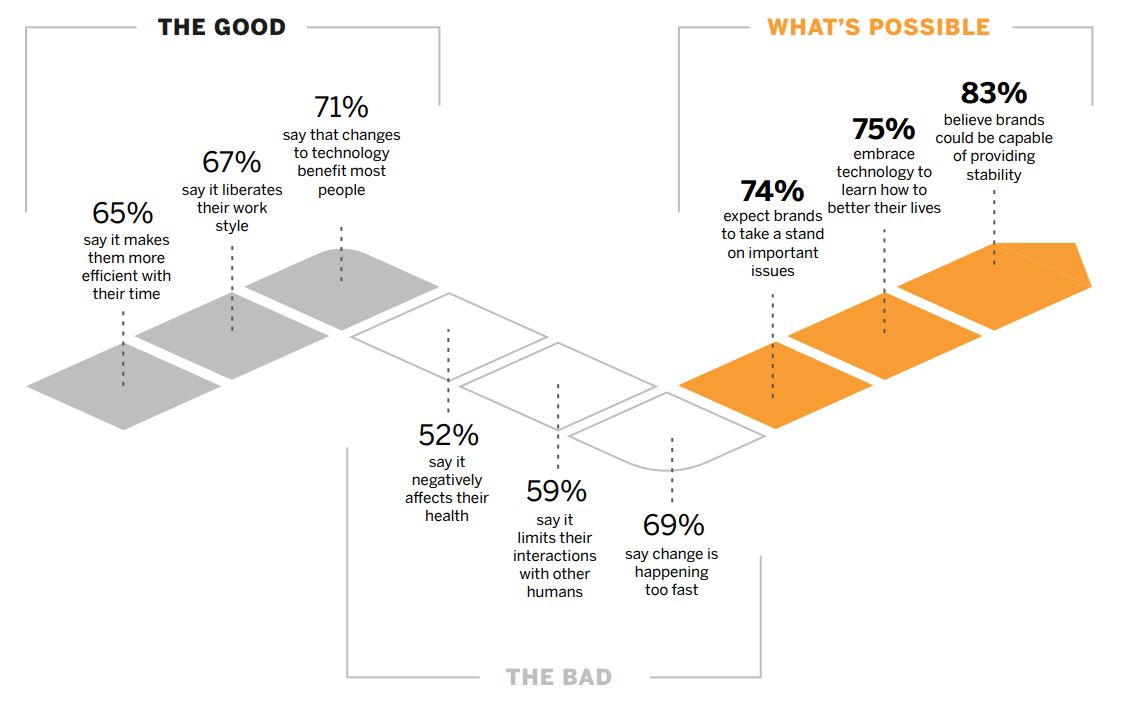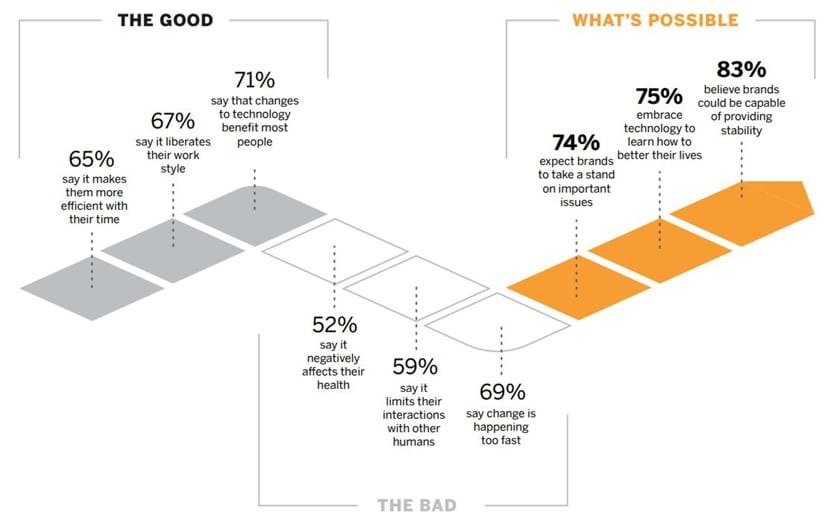
From Nirvana to Digital Teams: Why Three Is the Magic Number
How data can fuel creativity and help us work smarter
It’s quite obvious when you think about it — three has always been the magic number. It’s what breaks ties and makes democracies work. It has deep religious and spiritual significance. It’s Luke, Leia and Han; The good, the bad and the ugly; (and because I’m a Seattle music geek) Krist, Dave and Kurt.
So when you consider today’s binary world, one driven by data and computing power, it should have been obvious sooner that a third element was missing. Have you noticed how indistinguishable so many customer experience products are? How you can open four different banking apps and they all look the same? Have you seen the ads for enterprise services in airports, and have you noticed how quickly you stop noticing them?
Once you start thinking about this “sea of sameness,” you can’t stop seeing it. True branded experiences with human emotion at the core seems increasingly rare in today’s digital world.
I didn’t realize this until Ray Page joined us last June and started helping WE Communications evolve our integrated marketing communications and digital creative teams — and our digital planning skills. To really excel at using our gift of communications to drive positive action in the world, we need to excel at creative production — but we also need to add a key third element into the mix. Including a technologist in the creative process helps us move people to action, tell the right story and connect with audiences on a creative, human level.
The importance of humanity
Connecting human emotion to digital is more important than ever. Our recent Brands in Motion global study found that the digital age isn’t upon us, the digital age is us. Our evolving relationship with our technology is changing the way we look for meaning in our daily lives. Across genders, geographies and generations, we’re surprisingly unified on the good and the bad of technology — and what’s possible:


For brands, and for creatives building work for brands, it’s a paradigm shift. To succeed, they need to be human to the core, building products and campaigns based on mutual respect and the humanity of their customers and stakeholders.
The Trifecta Model: Data and strategy to center humanity
The Trifecta model, which we debuted last week at the Seattle Interactive Conference, is well suited to this new paradigm — creative work that’s uniquely capable of building a human connection between people.
Traditionally, creative teams at agencies work in pairs or silos: an art director and a writer, a designer and a developer. They strategize, they create, they iterate, and in the end turn in a creative product. In the past this has worked well, but today, more and more creative output looks like just another drop in the sea of sameness.
Why is that? Because more often than not, creative teams and technologists are isolated from each other. No collaboration, no iteration. An art director and a designer working together can build the most creative experience for a branded app in the world, but if an experienced developer isn’t involved from step one — iterating with them, weighing in, educating them on the ins and outs of how the technology works — that creative is going to get compromised and wedged into a cookie-cutter app that looks like everybody else’s.
Pairing the traditional creative team duo with a data scientist, social strategist, developer or tech planner from the very beginning is the heart of the Trifecta model.
The PR industry has been taking baby steps into this world for a decade. The rise of social media influence has forced PR agencies to dip their toe in, working with technologists to understand audience dynamics, but it’s still a work in progress across the category. I’m happy to work at an agency that’s putting it into practice and investing into working in a more integrated way.
Learn more about WE DXT and what the Trifecta model can do.
The latest blogs from WE
Decoding Gen Alpha: A Primer on the Next Gen of Consumers
Why Gen Alpha Will Fuel Spending This Season
Why Reputation Is a Business Driver in Healthcare


